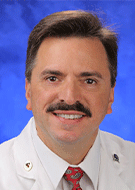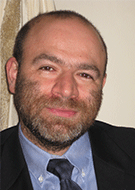Avoiding a "Culture Clash" During Academic and Community-Based Practice Integration
Strategies for blending community-based practices with academic institutions


This is the second in a series addressing issues facing private radiology practices. Read the first and third stories in the series.
Consolidation is a fact of life in the health care industry. Smaller, community-based organizations have been joining with larger academic health care institutions at an increasing rate in recent years, resulting in huge health systems that aim to provide better, more efficient care.
According to Michael A. Bruno, MD, MS, this trend raises an important question for radiologists: Is it truly possible for academic and community practice radiology groups to work together successfully?
Dr. Bruno, who contributed to a recent American Journal of Roentgenology article on the subject, serves as professor of radiology and medicine, vice chair for quality and safety and chief of emergency radiology at the Penn State Milton S. Hershey Medical Center and Penn State College of Medicine in Hershey.
In the article, he noted the recent creation of Penn State Health, a large, hybrid health system combining the Penn State Milton S. Hershey Medical Center, which is an academic medical center (AMC) and home to the Penn State College of Medicine, with four community hospitals distributed throughout central Pennsylvania and a large network of outpatient facilities in five counties.
“Probably the biggest challenge is blending two very distinct cultures,” Dr. Bruno said. “Community practice radiologists strive to maximize efficiency and the number of patients they serve—and so they generally can operate with greater efficiency, have lower cost per relative value unit (RVU) generated, and often much shorter report turnaround times and patient waiting times than academic practice radiologists.”
Academic practice radiologists, on the other hand, provide clinical care while also teaching and completing scholarly work.
“Academic practice also tends to be more highly subspecialized, which is appropriate for training and research missions, and which is something that academic radiologists value; however, sub-specialization also substantially raises costs and reduces efficiency,” he said.
A clash of the two cultures can be avoided, he said, “if the work is divided appropriately, the metrics are chosen wisely, and the compensation models, though different, are fair to both sides. Otherwise, you will have ‘a house divided.’”
Watch Dr. Bruno discuss how academic and community-based radiology practices can successfully merge:
Practice Integration in Canada
Michael N. Patlas, MD, FRCPC, professor and chair of the Department of Medical Imaging, Temerty Faculty of Medicine at the University of Toronto, is seeing a shift from traditional dichotomous practice (academic or community) to hybrid practice. As he explained in a recent Academic Radiology article, Dr. Patlas attributes this shift to increased demands on academic radiologists and growing case complexity in community practice requiring subspecialty expertise.
“There are two major integration models in Canada: The first is a community practice owned by an academic group, and the second is an academic group that provides coverage for community practices, including outpatient practices or community hospitals,” Dr. Patlas said. “I am a strong supporter of the second model when the academic group can provide 24/7 subspecialty support to community colleagues, including complex on call cases.”
Practice integration has the potential to be a “win-win” in Canada for various reasons, according to Dr. Patlas.
“Canada is a large country with multiple small community hospitals,” he said. “These hospitals are well-equipped with CT scanners but have small radiology groups. It is a major challenge for small groups to provide 24/7 emergency radiology coverage—in fact, it is one of the reasons for burnout among community radiologists.”
Another benefit of consolidation is that large academic groups can help with using teleradiology and shared protocols, Dr. Patlas said, noting that the revenue stream from community coverage can support an academic mission. In addition, newly aligned academic-community practices can help give Canadian radiology residents more community-based rotations, helping to prepare them for real-world radiology practice, he asserted.
Watch Dr. Patlas discuss the benefits of merging academic and community-based practices:
“Some centers try to fully integrate the community division as part of the academic medical enterprise, while others are more like ‘parallel play with overlap,’ and still others are completely dissociated, both organizationally and geographically.”
Michael A. Bruno, MD, MS
Benefits and Drawbacks of Different Integration Strategies
According to Dr. Bruno, institutions are trying a variety of ways to integrate radiology practices into large institutions.
“Some centers try to fully integrate the community division as part of the academic medical enterprise, while others are more like ‘parallel play with overlap,’ and still others are completely dissociated, both organizationally and geographically,” he said.
In Dr. Bruno’s view, the partial integration model offers significant benefits, as it can potentially optimize the synergies between the two practice groups; however, this type of integration tends to create the most friction and requires the greatest leadership finesse.
“The total dissociation model is the easiest to manage, of course, but it doesn’t offer the potential of multiplying the value beyond the sum of the parts,” he said.
In theory, Dr. Bruno noted, successfully integrated practices should add more value to patient care than non-integrated practices, since a fully integrated academic/community practice should offer things such as greater efficiency and enhanced patient care without sacrificing the research and teaching missions.
“But if leadership gets the integration plan wrong, then integrated organizations will underperform,” he said.
Integrated academic health systems must balance their commitment to the future as well as to the present demands for providing high-quality patient care, Dr. Bruno said.
“The integrated academic-community radiology department within a larger integrated academic-community health system has the potential to get the balance right, but it will require creative, energetic and thoughtful leadership,” he asserted.
For More Information
- Access the American Journal of Roentgenology study at ajronline.org
- Access the Academic Radiology study at academicradiology.org
Read previous RSNA News stories on private practice issues: